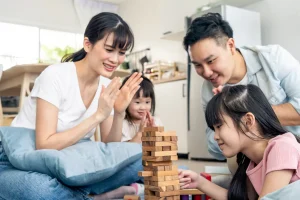Inspiring Your Child Through STEAM Education
![]()
- Posted by abrakadoodle.com.sg
- Categories Early childhood development
- Date 20 October 2022
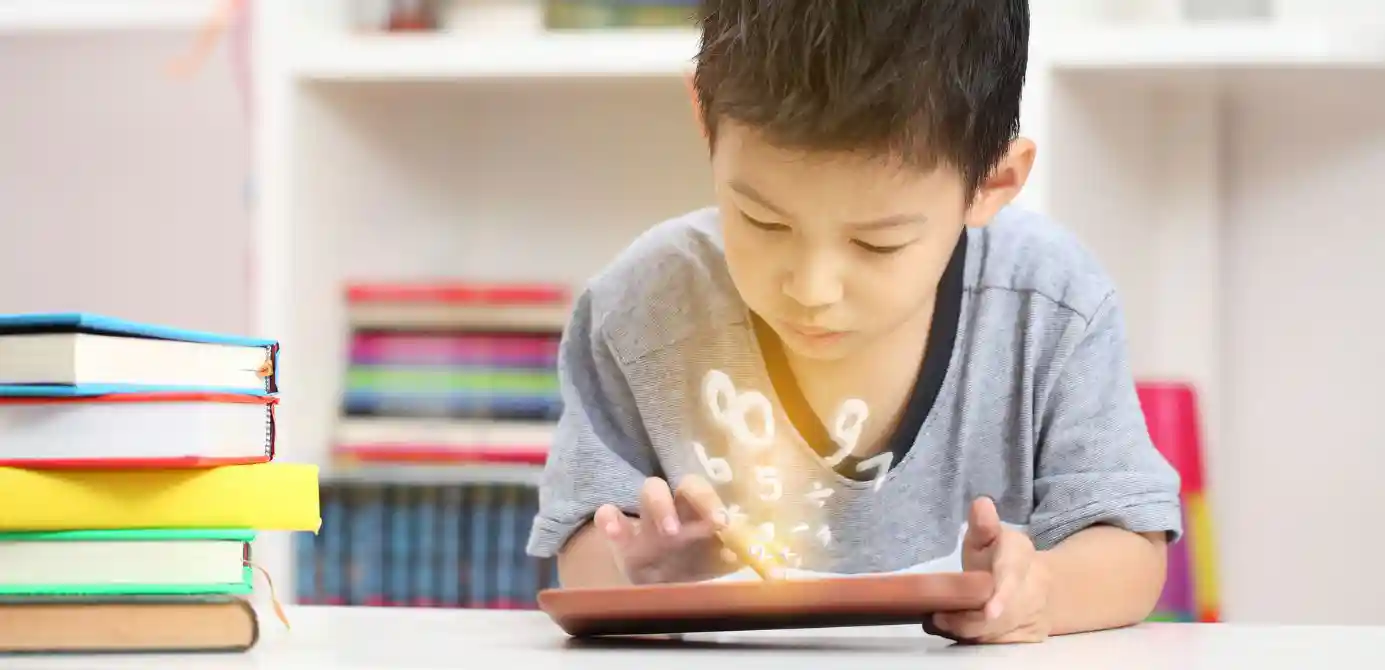
It is every parent’s desire to give their child a head start in life. Especially when it comes to meeting their child’s educational and cognitive development needs. Switching to STEAM education will be a great start to a truly rewarding life-long learning experience.
STEAM learning initiatives are becoming increasingly critical in the years before formal school education begins. It is considered to be the best way to prepare young children for educational journeys while retaining the need for fun and excitement so important at their age.
But what exactly is STEAM? The acronym stands for – Science, Technology, Engineering, Arts and Mathematics.
These disciplines work together and help young children understand that these subjects are not separate but interconnected. Not only is STEAM’s interdisciplinary approach more reflective of how these disciplines interact in real life, but also of how STEAM works in real life.
When you opt to go full speed ahead with STEAM education, your child will gain a unique opportunity to experience everything she is learning from a completely different perspective. This is because STEAM programs help parents focus on promoting self-directed play and exploration in the early years of their child’s life.
The primary aim of starting STEAM programs at an early age is to further develop a child’s curiosity, acquire the ability to have a longer attention span and encourage inquisitiveness. Studies on the effectiveness of STEAM education have indicated that while toddlers and preschoolers may be too young to comprehend complex concepts, they can continue with their desire to learn through play and self-development.
Table of Contents
ToggleWhy STEAM education is so critical
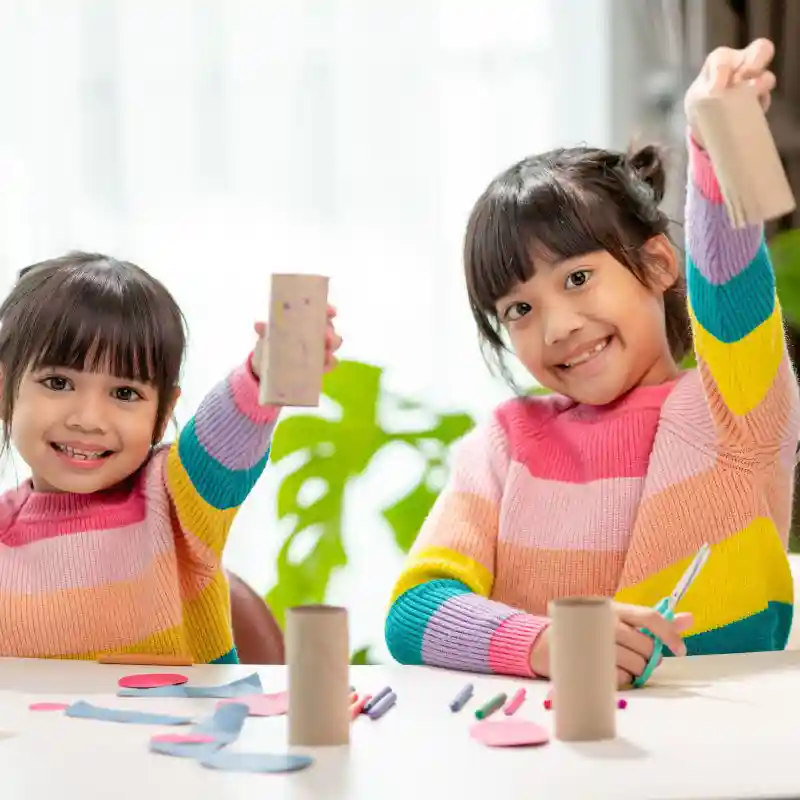
STEAM programs encourage preschoolers to use all of their senses to explore the world around them. Learning to use their sense of seeing, touch, hearing, smell and speech naturally lead to boosting fine motor skills, and developing language to communicate about what children observe.
Furthermore, the safe learning environment of the home allows children to push themselves to try new ideas and gain the confidence needed to use new tools and experiment with unfamiliar items.
Young children who embrace STEAM skills in their infancy are shown to have a better chance of transitioning into the rigours of school life with ease. High comfort levels and increased self-confidence translate to better performances.
So if you have a child aged 1 to 4, now is the time to give careful consideration to begin participating in STEAM activities for preschoolers and learn about how they can be incorporated into your child’s life for the best possible outcomes.
Exploring STEAM
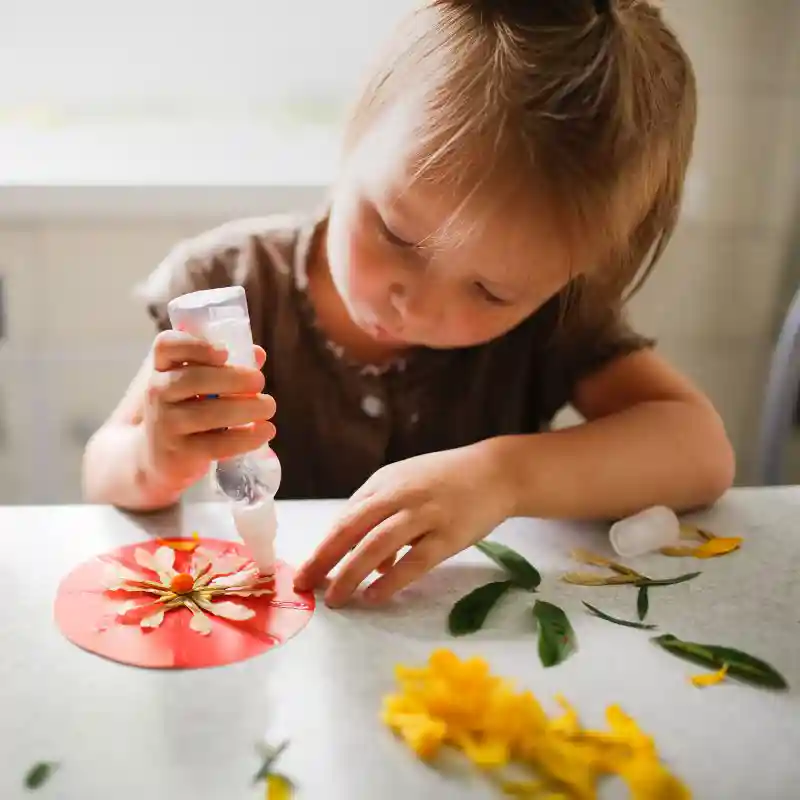
Science is centred on our capacity to wonder about things that are tangible and intangible. It is always driven by our desire to explore. It’s about ourselves, others, the natural world and our interdependence – as a matter of fact, it is the basis of our very reason to be. We engage with science through a growth mindset and the effective use of our senses.
Only a scientific approach to this urge will be able to sustain and nurture our children. Propelling their desire to learn to investigate, observe, test, predict, evaluate and gather evidence. Its absence will forever undermine and relegate our children to leading a life without beauty, and wonder and suppress the desire to know more.
The truth is children are born curious and inquisitive. The interconnection of all life on Earth is an essential core and leads young children to stimulate their natural curiosity and nurture the desire to connect. Our future depends on a child’s understanding of this fact.
Technology is about being able to put our thoughts and ideas into action and creating things that work for the general well-being of mankind.
There are images of, and literature about mechanical vehicles through the ages – from the penny-farthings to the steam engine to flying machines – all provoking conceptual analysis of how technological skills have developed over time.
Buildings and structures are also the keys, they tell and introduce our children to inspiring examples from across the world, including the Great Pyramids, the Eiffel Tower and the Taj Mahal. By studying these wonders, children get to see and understand how human thinking and skill have changed the world.
Children need to see and be inspired to have real solutions to real problems and apply their skills to effect positive change.
Engineering is design thinking and innovation working together. Children need the time to explore and come up with a solution to an identified problem and have the opportunity to design and redesign based on their observations and findings. This is when children will be able to explore how to problem-solve in all aspects of their life.
Thinking about engineering, children learn to deconstruct. That is understanding the validity of being able to break a complex concept down into smaller and more manageable parts.
Through abstraction, children learn how to eliminate unnecessary and unhelpful detail so that they can achieve clarity when pursuing an outcome.
And finally, through collaboration children get a handle on the value of teamwork, understanding working together with others is sometimes more successful than working alone.
Engineering in other words is about taking all of our skills and our wonderings to create something the world may have never seen before. Sometimes invent something truly amazing!
Art is at the core of STEAM education and is the spark that motivates children to engage. For that to happen, it will be essential that we allow children to explore their creativity and as parents and adults, we need to understand and respect a child’s need to develop her creative thinking abilities.
Every child’s potential needs to be seen as a window through which they can see their world. And to help a child express her creativity, we need to provide stimulating opportunities and environments on a daily basis. Empower children to think, wonder, question, explore and express themselves.
Celebrate the freedom of expression, and allow the uniqueness of creativity, critical thinking, problem-solving and innovative processes to take centre stage in everyone’s lives.
Art plays a central role in aiding and developing the creative process. Creativity becomes a reality only when adults become more attentive to facilitating the cognitive processes of young children, rather than being concerned with the end results they achieve in various fields of doing and understanding.
Maths is so much more than recognizing shapes and counting numbers! Maths is when everything is seen from a mathematical perspective and success in it is achieved through a mindset which is open, analytical and curious.
Maths is seen as both a rigid and creative subject. It is both serious and fun. Maths is for everyone, including young children. Every child can be taught to believe in their abilities to master maths.
Children will achieve success in many different fields of study only when they adopt and have a positive approach to mathematical learning.
Learning to think differently
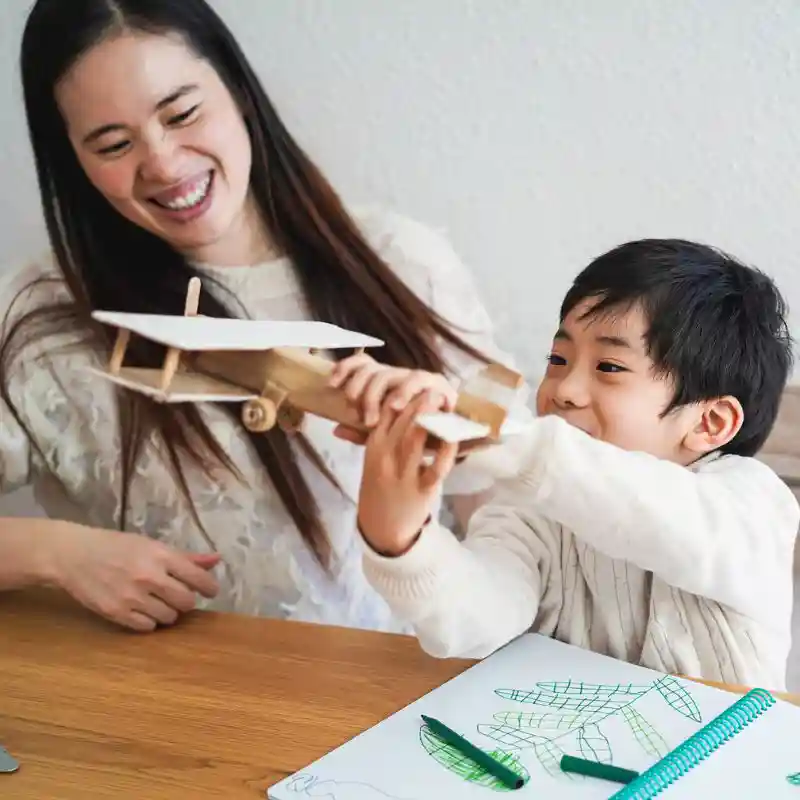
STEAM activities for preschoolers touch upon every sphere of their lives. And since they are already digital natives, the more relevant the STEAM phenomenon becomes. For instance, more and more children will benefit from a networked system of learning that shows them how mathematics isn’t an isolated disciplinary universe, but an effective tool with which they can approach and solve problems in other disciplines — most importantly, doing so in a way that imitates real-life conditions.
STEAM programs accelerate not only the development of crucial cognitive skills but also benefit rapid progress in acquiring social and communication skills to enable active collaboration – the perfect combination for success in the digital age.
When your child takes part in STEAM-based activities, her interactions with other children, or adults increase and become a critical process. Remember, a shared curiosity and joint investigations can send a child’s love of learning to a whole new level.
Steam activities for preschoolers close a gap that earlier generations may have experienced when in school. Education is now closer to establishing itself as a natural process of social interaction in which the focus is always on the process and development of the learner, and not so much on the final result of a specific standardized test.
Practising soft skills
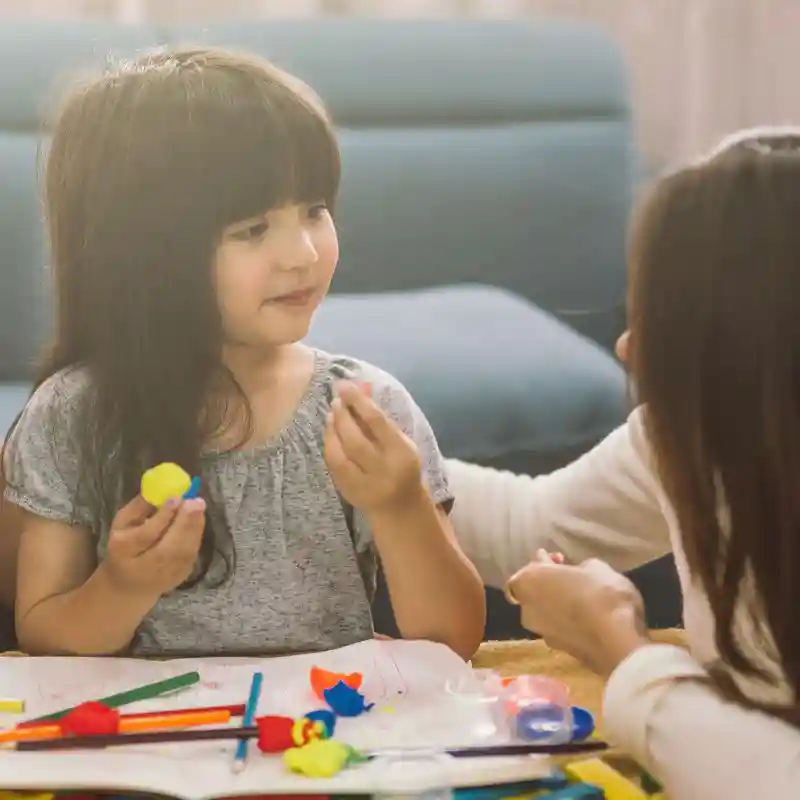
Nothing is more rewarding for parents than seeing their child having fun while learning something new and strengthening her 21st century skills. Coding is a phenomenal way for your child to learn in a non-threatening environment.
Coding is among the master keys to developing critical thinking abilities through active collaboration, boosting your child’s creativity, and increasing her levels of both self-confidence and self-esteem. Children also get to learn while understanding that mistakes are nothing more than experiences that pave the way for more learning.
When engaged and working with STEAM projects in their infancy, young children practice a whole range of developing soft skills in real time. They learn to be effective and collaborative and highly adaptable. The work they do requires a large portion of creativity, listening skills, task management, and problem-solving skills, and develops empathy towards finding an effective solution and coming up with multiple variations of the solution.
There are numerous ways to start a child’s journey in STEAM enrichment programs. However, the most essential component of any educational technique needs to be driven by engaging activities. Enabling children to comprehend how and why things happen the way they do. Shows them that when hands-on learning is actually applied in a fun, safe environment, learning can be engaging and enjoyable.
Children can indeed become way better in their own areas of interest and reach their full potential. Enjoying not only their learning process but also developing a genuine hunger for new knowledge. Their success, however, will depend upon the intensity of passion, the one element that can propel a creative genius to become a game changer!
About Abrakadoodle
Process Art learning experiences inspire toddlers and young children to think differently, be innovative, and devise ways to learn about interesting things found in the real world. Changing the way a child discovers and imagines ignites her mind to think, play, and learn like never before.
If you would like to enrol your child in our children’s art classes or participate in cognitive learning activities, give Abrakadoodle a call. Or better still, make an appointment with the head of a centre near you.
Get hands-on exposure to an experience that will make you see art in a way that adds value to your child’s life.
Please note: Abrakadoodle classrooms are thoroughly sanitized every day — the tables, the chairs, the children’s activity stations, and everything else the child might touch are made safe and clean. They also wear a mask, wash their hands frequently, and practice social distancing.
Frequently Asked Questions
STEAM education combines the fundamental disciplines of holistic development, such as science, technology, engineering, arts, and mathematics, to pique a child's interest and broaden their perspective.
The following highlights the importance of STEAM education during the foundational years of life:
- Promotes self-exploration
- Facilitates easier comprehension of complex subjects
- Improves attention space
- Encourages innovation and problem-solving
- Stimulates the primary senses effectively
- Encourages logical reasoning and critical thinking.
- Enhances creative thinking abilities
The five components of STEAM program for preschoolers are elaborated below:
1. Science - It focuses on concepts that can be tangible or intangible, but allow for in-depth exploration and analysis.
2. Technology - It drives the application of knowledge to determine solutions for real-time problems that impact mankind.
3. Engineering - It combines skills with innovation and divides complex subjects into smaller, more manageable lessons.
4. Arts - It motivates children to harness their innate potential and express their imagination through creative outcomes.
5. Mathematics - It develops children's analytical skills and logical reasoning by allowing them to learn through play and enriching exercises based on the concept of numbers.
The primary goal of STEAM skills is to foster creativity in children, which allows them to comprehend complex concepts with greater ease. When children participate in a diverse set of interdisciplinary STEAM activities, they become naturally inquisitive and develop a longer attention span, which helps them absorb information more easily and acquire the ability to process this information to develop practical solutions for critical problems.
A STEAM-based learning approach for preschoolers aims to provide them with foundational skills that will help them adapt to their academic journey beyond childhood.
The far-reaching benefits of STEAM activities for preschoolers include the following:
- It stimulates their sensory exploration
- It strengthens their fine motor capabilities
- It aids in the development of linguistic and literary skills
- It provides opportunities for self-discovery and boosts confidence
- It also improves social interactions with family and peers
- It helps them acquire creative thinking abilities
STEAM education plays a pivotal role in the holistic development of children during early childhood, as this interdisciplinary approach exposes children to a myriad of real-life situations that provide them with the opportunity to explore, innovate, and channel their creative ideas into purposeful actions. It makes children highly adaptable and collaborative in their approach to ensure effective management of tasks throughout their lives. Children who are engaged in STEAM activities from the very start grow up to be more empathetic and self-sufficient adults who can strike a balance between their emotions and actions.
You may also like
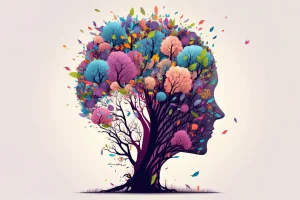
The Impact Of Colour On A Child’s Development
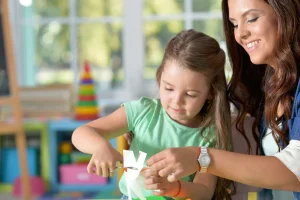
How Collage-making Activity Helps A Child To Think Creatively
